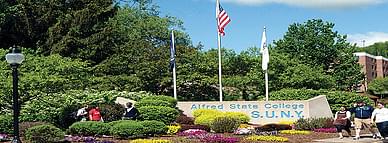Bachelor of Science [B.S] (Neuroscience)
STEM Course
4 years
full time
On Campus
Field of Study:
₹55.5 L/Yr
$64,540 /Yr
Tuition Fees
| Year | 1st Year Fees |
|---|---|
| Tuition Fees | ₹5546568 (USD 64540) |
Other Expenses
| Head | Avg Cost Per Year |
|---|---|
| Room and Board | ₹1289100 (USD 15000) |
| Total Cost | ₹1289100 (USD 15000) |
Previous Year Tuition Fees
| Year | 1st Year Fees |
|---|---|
| 2021 | ₹5100539 (USD 59350) |
- The areas that neuroscience draws upon and addresses are diverse and interdisciplinary. They range from physiological and molecular studies of single neurons, through investigations of how systems of neurons produce phenomena such as vision and movement, to the study of the neural basis of emotions and complex cognitive phenomena such as memory, language, and consciousness. The interdisciplinary nature of the field is also apparent when surveying those who call themselves neuroscientists. Among these are anatomists, physiologists, chemists, psychologists, philosophers, molecular biologists, computer scientists, linguists, and ethologists. Combining such a wide range of approaches and research methods to study the brain requires a correspondingly interdisciplinary framework. The Williams College Neuroscience Program is designed to provide students the opportunity to use this interdisciplinary approach. Upon completing the program, students should have developed the skills for studying a single remarkably complex organ, the brain, and the behavior that it controls:
- Mastery of content. Students will know the neuroanatomy of the brain and the functions of specific areas within the brain. They will understand the electrical properties of neurons, signaling via neurotransmitters, the principles of sensory encoding, how motor systems work, how circuits are organized and regulated, how behavioral tests and measures can be used to assess nervous system function, and how connections are altered during development and via adult plasticity. Finally, they will be familiar with a wide variety of techniques used to explore brain structure and function, and they will understand both the advantages and the inherent limitations of specific techniques.
- Critical analysis. Students will be able to read the primary literature, recognizing the central question and the specific hypothesis being tested. They will be equipped to carefully critique the methods and results, and be able to understand the wider implications of those results. In addition, students will be able to develop alternative interpretations and formulate strategies for testing those interpretations.
- The ability to independently extend knowledge about neuroscience. Students will be able to design novel hypothesis-driven experiments that use appropriate techniques and measures to extend existing knowledge. Students will have opportunities to carry out such projects, either in upper-level courses or in a research laboratory.
- Communication. Students will be able to present information about neuroscience orally to a wide variety of audiences – for example, to specialists in the field, to the general public, or to elementary school students. Students will also be able to present their ideas and results in standard scientific written formats, such as professional posters, articles intended for publication, and research proposals.
Read More
Eligibility & Entry Requirement
Academic Eligibility:
- School Report
- Mid-Year Report (Due February 26* or for schools on a trimester, when 2nd-trimester grades are available)
- All students applying for entry at Williams in fall 2021, 2022, or 2023 may choose whether to submit SAT/ACT exam results. Regardless, their application will be reviewed in a thorough, student-centered, holistic admission process.
-
If a student’s first language or the language of academic instruction isn't English, we'll use their application as an assessment of your English proficiency. Williams doesn't require students to take a proficiency exam like the TOEFL, IELTS, or Duolingo, but William’s happy to review scores from those tests if students would like to submit them.
Read More
TOP Scholarships
| Scholarship name | Award amount | Eligibility |
|---|---|---|
| - | - | - |
| - | - | - |
| - | - | - |
Key Resources for Your Study Abroad Journey
Scholarship Grants & Financial Aids
| Name | Scholarship Per Student | Level of Study | Type | |
|---|---|---|---|---|
| Debesh Kamal Scholarship | Scholarship per student₹ 1.2 L/Yr$1,385 | Level Of StudyBachelor | TypeMerit-Based | |
| Ritchie-Jennings Memorial Scholarship Program | Scholarship per studentVariable Amount | Level Of StudyBachelor | TypeMerit-Based | |
| Innovation in Education Scholarship - La Tutors 123 | Scholarship per student₹ 42,970/Yr$500 | Level Of StudyBachelor | TypeMerit-Based | |
| Gunvant & Bharati Parekh College Scholarship | Scholarship per student₹ 85,940/Yr$1,000 | Level Of StudyBachelor | TypeMerit-Based | |
| Next Genius Scholarship | Scholarship per studentVariable Amount | Level Of StudyBachelor | TypeMerit-Based |
Similar Programs
| Program | Important Date | Total Fees | Median Exams Score | Action |
|---|---|---|---|---|
-- | INR 55.5 L/Yr USD 64,540 /Yr | |||
-- | INR 25.8 L/Yr USD 30,010 /Yr |
|
Do you think the Dates are wrong ? Report Here
Similar Colleges

.jpeg?h=45&w=45&mode=stretch)
The College of Saint Rose
Albany, New York


Alfred State College
Alfred, New York


Albion College
Albion, Michigan


Muhlenberg College
Allentown, Pennsylvania


Alma College
Alma, Michigan


Amherst College
Amherst, Massachusetts


Hampshire College
Amherst, Massachusetts


Lebanon Valley College
Annville, Pennsylvania


Lawrence University
Appleton, Wisconsin


















.jpeg?h=40&w=40&mode=stretch)


.png?h=40&w=40&mode=stretch)





Comments